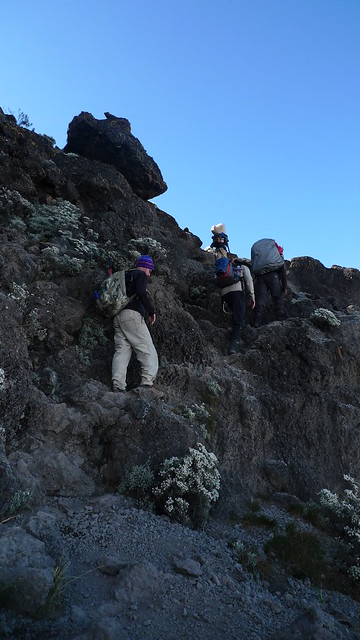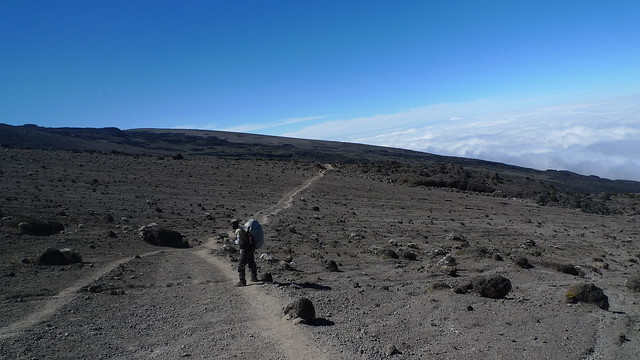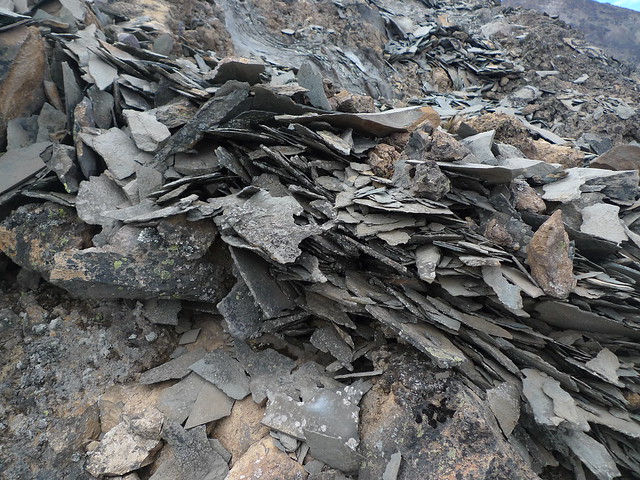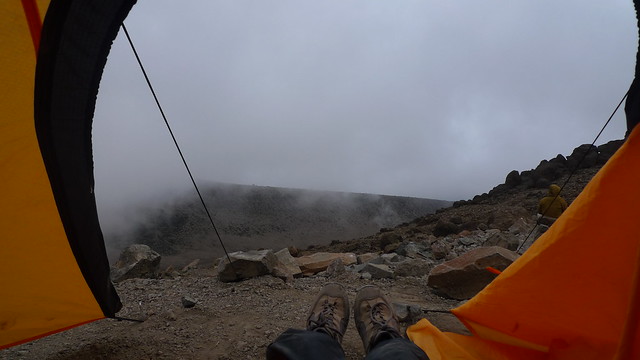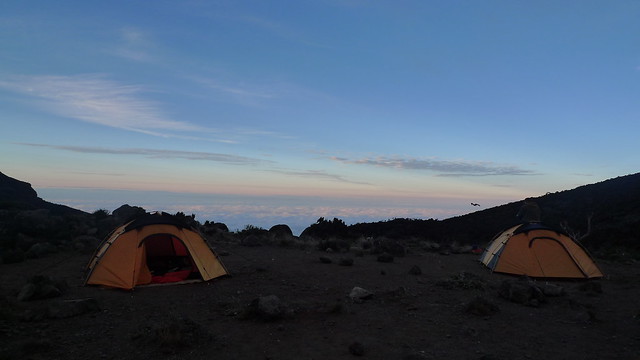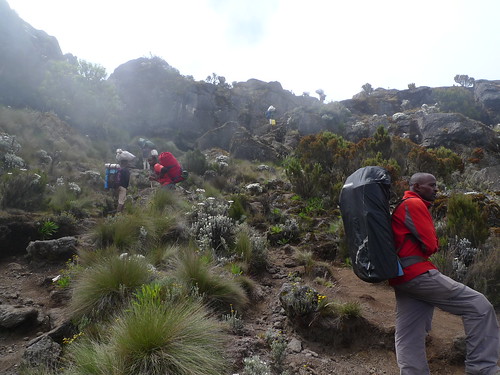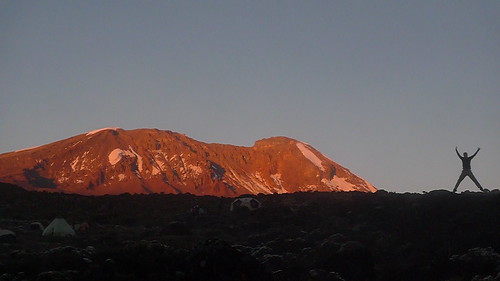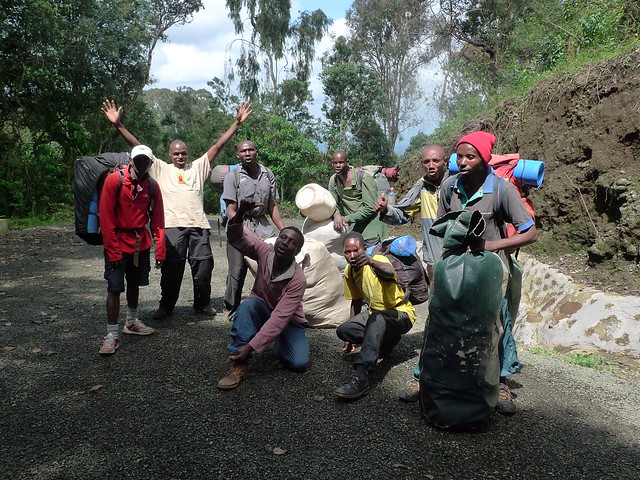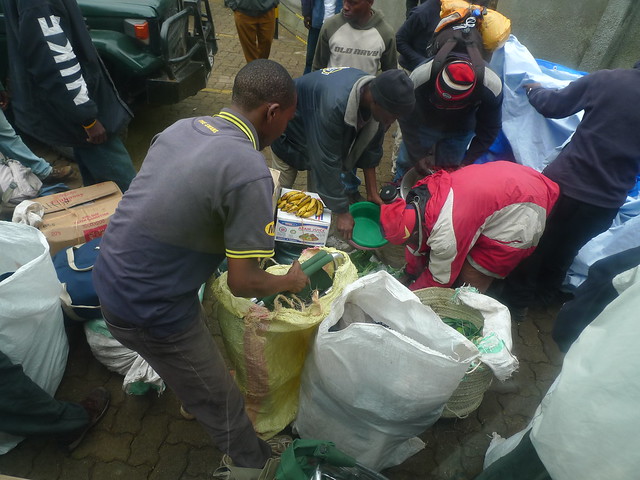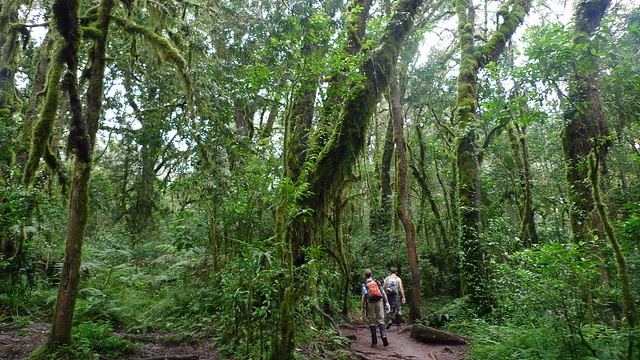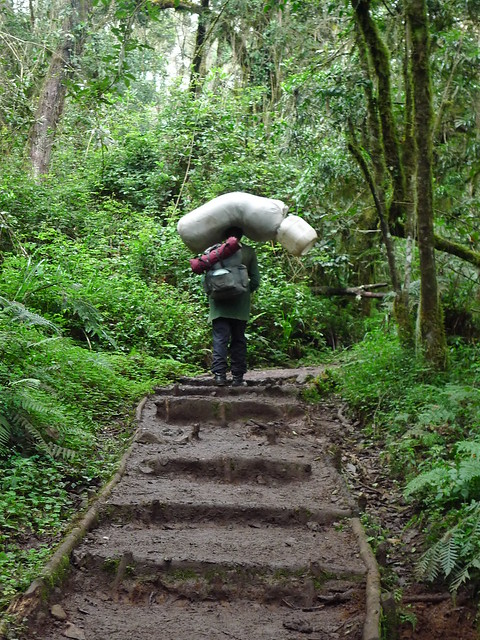I woke up extra early today to have coffee and fresh fruits at the restaurant before an ungodly start of 7:30am to our Valley of Desolation and Boiling Lake hike. Because most of the guests signed up to hike, yoga was cancelled.
I had asked Joanne in the kitchen last night to boil two eggs for me in the morning. Joanne being Joanne asked her staff to cook three for me. I ate two with my breakfast and packed the third with the lunch we signed up for: an assortment of peanut butter and jelly, cheese and tuna-cucumber sandwiches. We each asked for three sandwiches apiece with their homemade granola bars; we had no idea the 8-hour hike was going to make us more hungry than usual. By mid-day, we were exchanging sandwiches; begging for someone else’s PB&J and trading in granola bars.
The long drive through Dominica’s curvy road made me queasy so I was glad that we immediately started our hike from the parking lot when we arrived at 9:30am. I began to appreciate Jungle Bay’s early start to our days. We always arrived at popular hikes before anyone else, which made it seem like we were the only ones in the paths except for the occasional Germans who were stereotypically super fit and seemed to always be in a race for gold.
We trekked through the rain forest during the first two hours of our hike. Its lush surroundings reminded me of my first day in Kilimanjaro. Moss and vines hung from giant Banyan trees; wide elephant ear leaves and palm fronds formed canopies that barely let the sunlight in. Most of the path was muddy and quite slippery because of the constant moisture, so a lot of time and care were taken while we walked. We reached a flat top by lunch time. The view from high up was pretty unreal. It was drizzling a tiny bit but it was a welcomed respite from the forest’s humidity.
We could see the canyon which reminded me of Kauai’s Waimea. The earth was so red, a perfect contrast against all the greenery.
We stepped on steep steps made of bamboo logs down to the Valley of Desolation where we crossed over steaming streams that smelled like sulphur, hopped on iron-dotted red rocks and held on to slimy boulders for support. Whenever we came across running water, we gloriously refilled our drinking bottles.
When we finally made it to the Boiling Lake, Iceland came to mind. In the middle of the lake, vigorously boiling water proved that the volcano was still very active. There was a small waterfall on the side that just made the place surreal. Our group took another break while we ate our remaining sandwiches–I finally got to eat my boiled egg.
I was amazed at how one country would bring to mind my past three travels. Dominica has so much to offer and I wondered how it’s still under most people’s radar.
On our hike back, I remembered the small pool of water during one of our crossings. Sam had told me the night before that we could take a quick dip if we had time, and since I was hiking ahead with the three youngest participants of our group, we undressed to reveal our swimsuits underneath and jumped in. The rest of our group joined us a few minutes later and we all took turns under the small waterfall. We passed by a hot spring next, and feeling refreshed from our first swim, we all undressed again and slithered in. The hot water from the volcano was therapeutic but I much preferred the cold shocking water because I was hot during most of the hike. Our guide, Carlos, couldn’t really stop the adults-turned-children from making the unscheduled stops. We all knew we still had hours to go and that we had to be at the parking lot before it got dark, but we were all just having too good of a time not to jump in every pool of water we came across.
My massage appointment was moved since we were an hour late returning to Jungle Bay. I took a quick shower in my room before I subjected myself to an hour-long aromatherapy massage. My legs didn’t hurt after the hike, but my body certainly still appreciated the kneading.
I began to think that Christmas and my birthday won’t be so bad after all.
Related post/s:
Day 3 in Dominica photos on Flickr
Day 2 in Dominica: Victoria Falls
A summary of Dominica photos using Instagram




